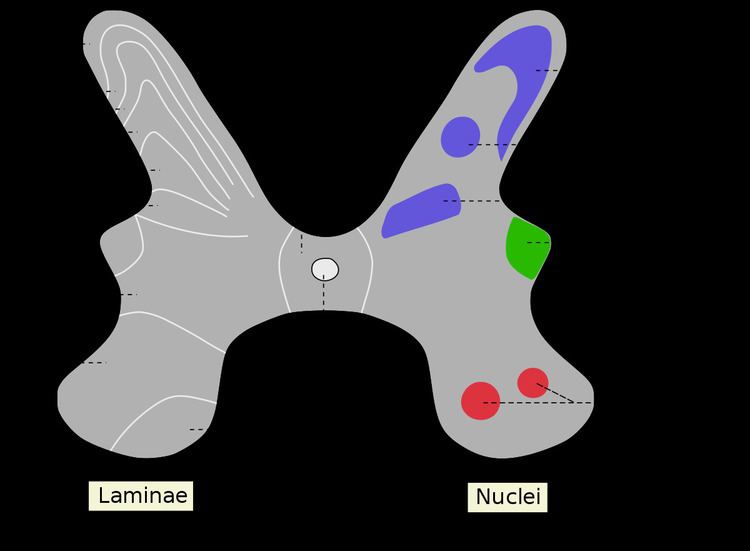 | ||
The Rexed laminae comprise a system of ten layers of grey matter (I-X), identified in the early 1950s by Bror Rexed to label portions of the grey columns of the spinal cord.
Similar to Brodmann areas, they are defined by their cellular structure rather than by their location, but the location still remains reasonably consistent.
Laminae
References
Rexed laminae Wikipedia(Text) CC BY-SA
